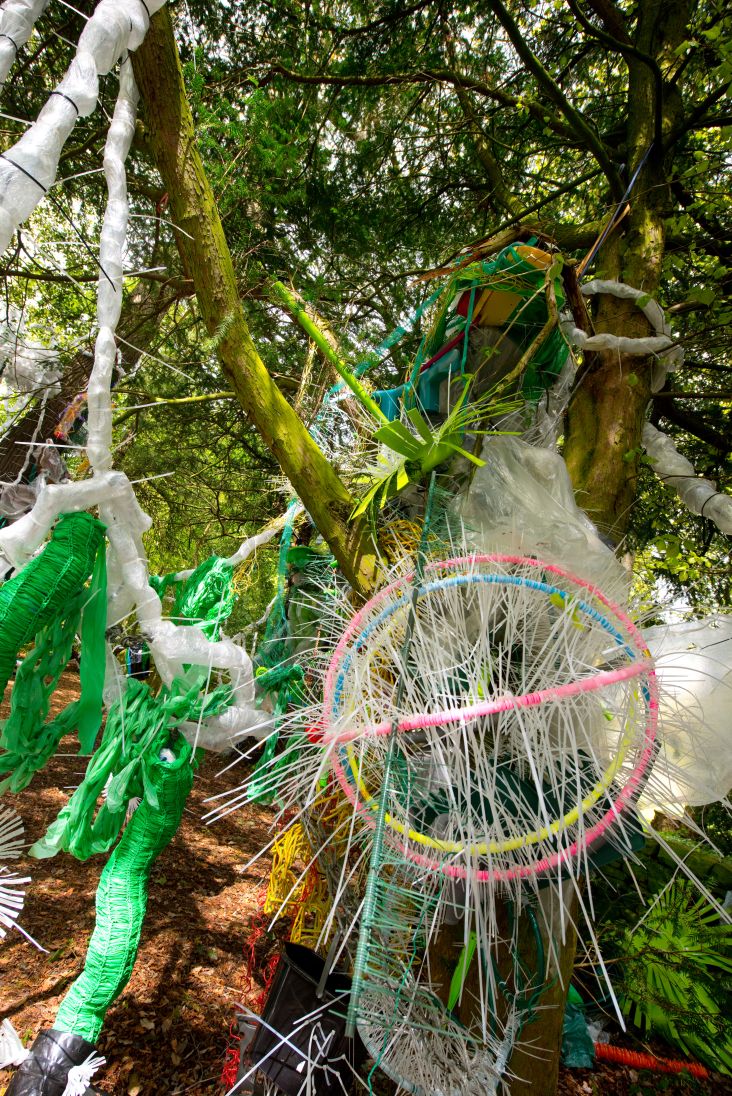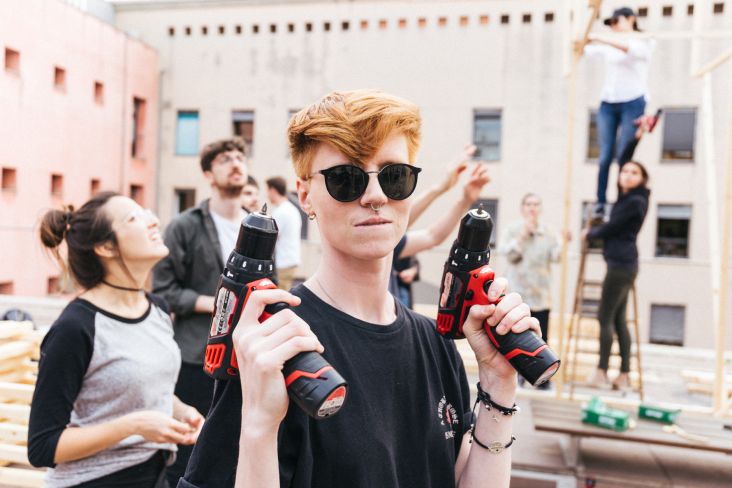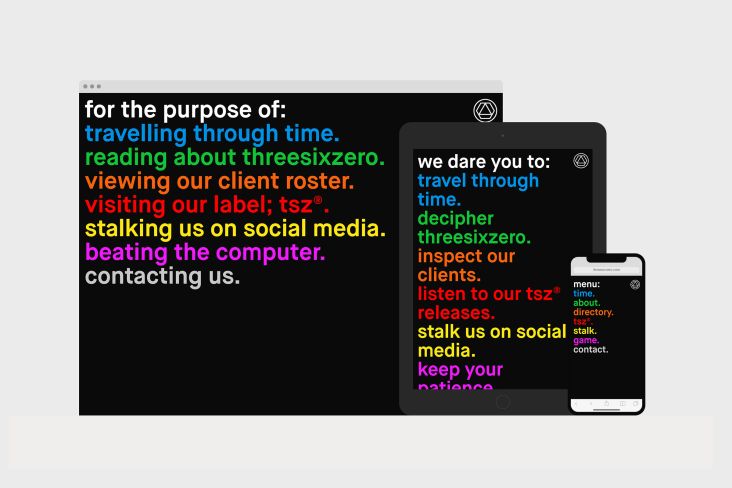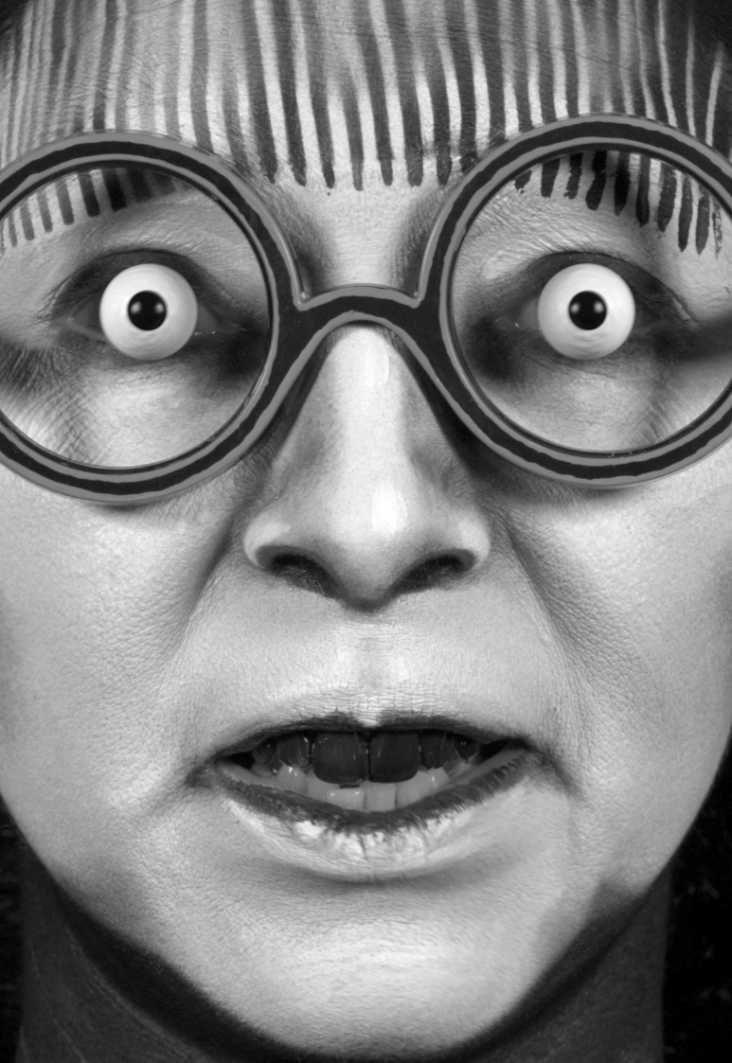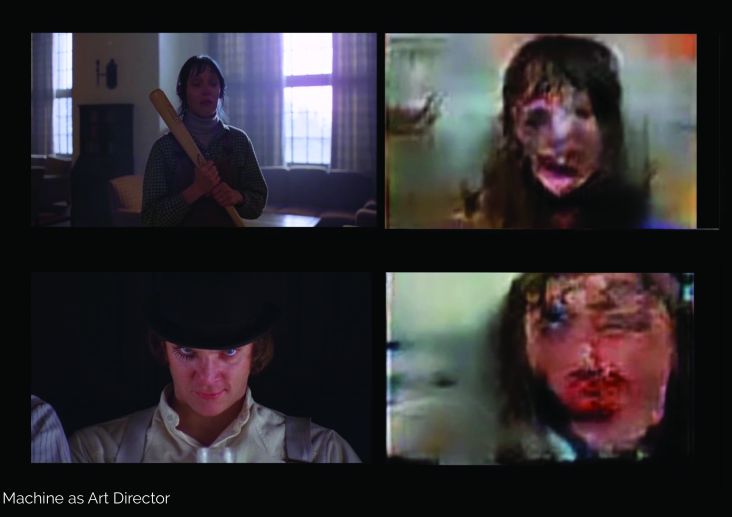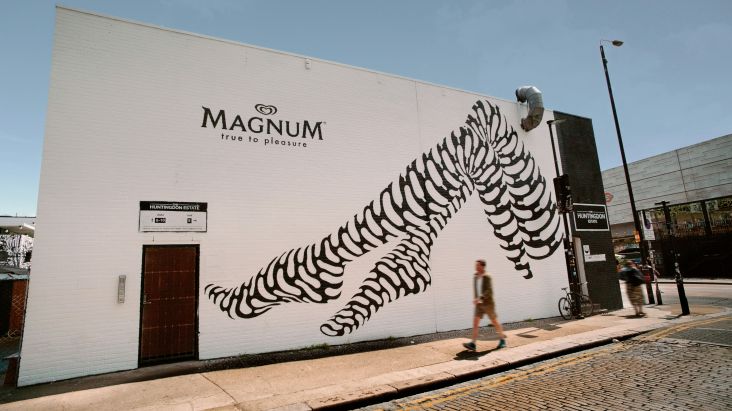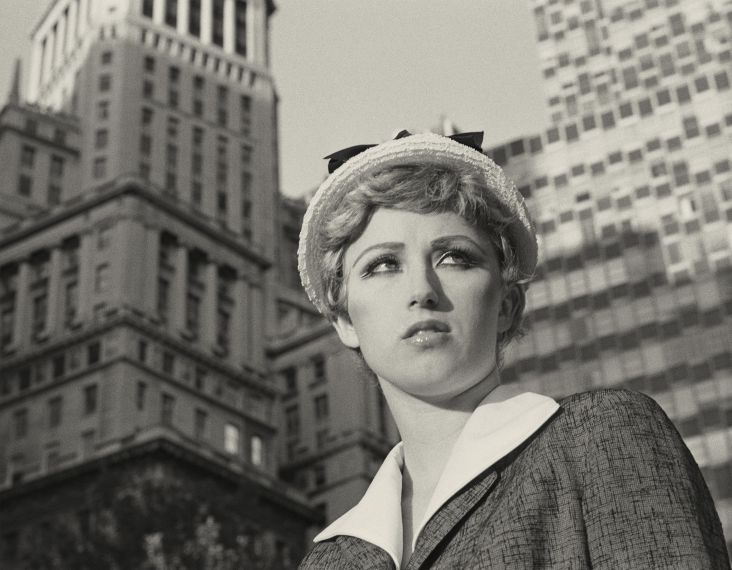What does our reliance on tech mean for how we view the female body?
Olga Feshina's New Tech Girls are both charming, calming and strange: posing with preened, practised Insta-ready perfection but somehow also vacant and vapid.
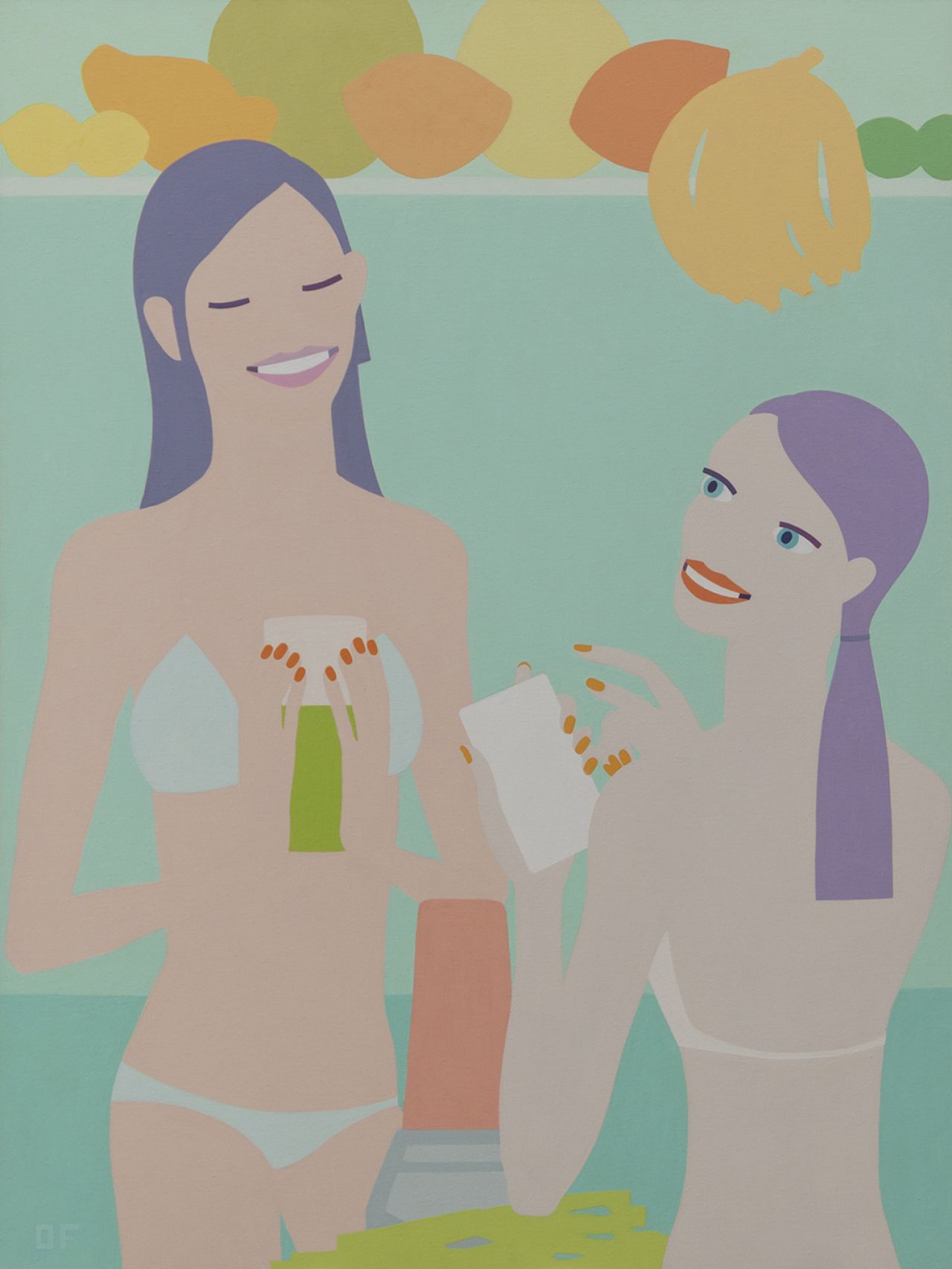
The poses and compositions (often seeing subjects taking selfies or talking on speakerphone) are all based on those from classical portraiture; juxtaposing the woman as “her own” subject today compared to that which was seen through the artists’ gazes in years gone by.
According to the artist, what’s interesting about such figures is that they embody a very modern, tech-based reality but also a classical view of the body that’s been largely unchanged for centuries.
Where Feshina portrays women in groups, she says they “tend to be constantly together as they strive to exchange information and then to share their senses of perception with the whole world. To get better harmony and mutual understanding the new girls subconsciously synchronise their poses, acting in unison either watching a movie, listening to music, taking a selfie, looking for smoothie recipes, getting parcels by drone, exploring the underwater world, virtual reality and their feminine nature with new tech gadgets.”
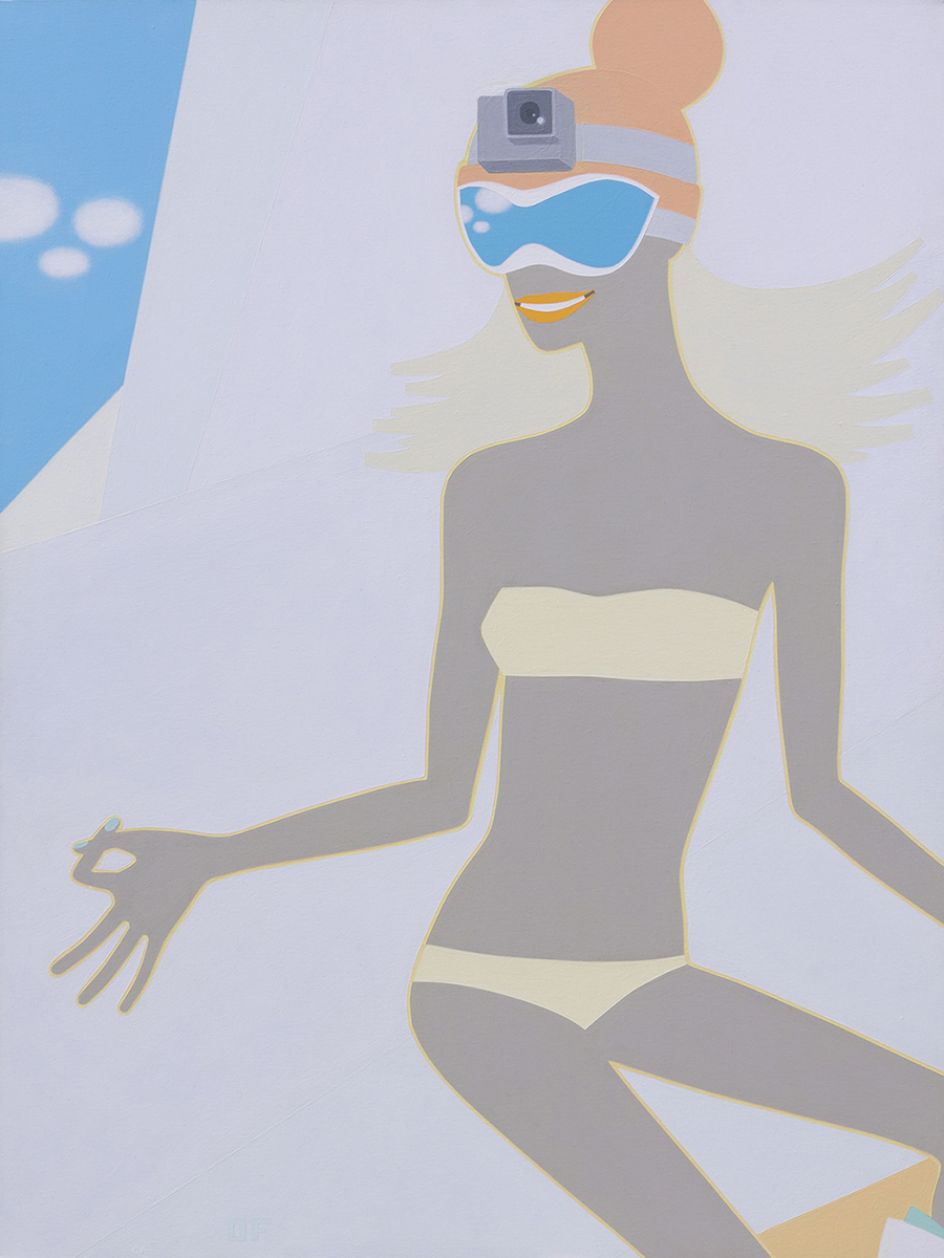
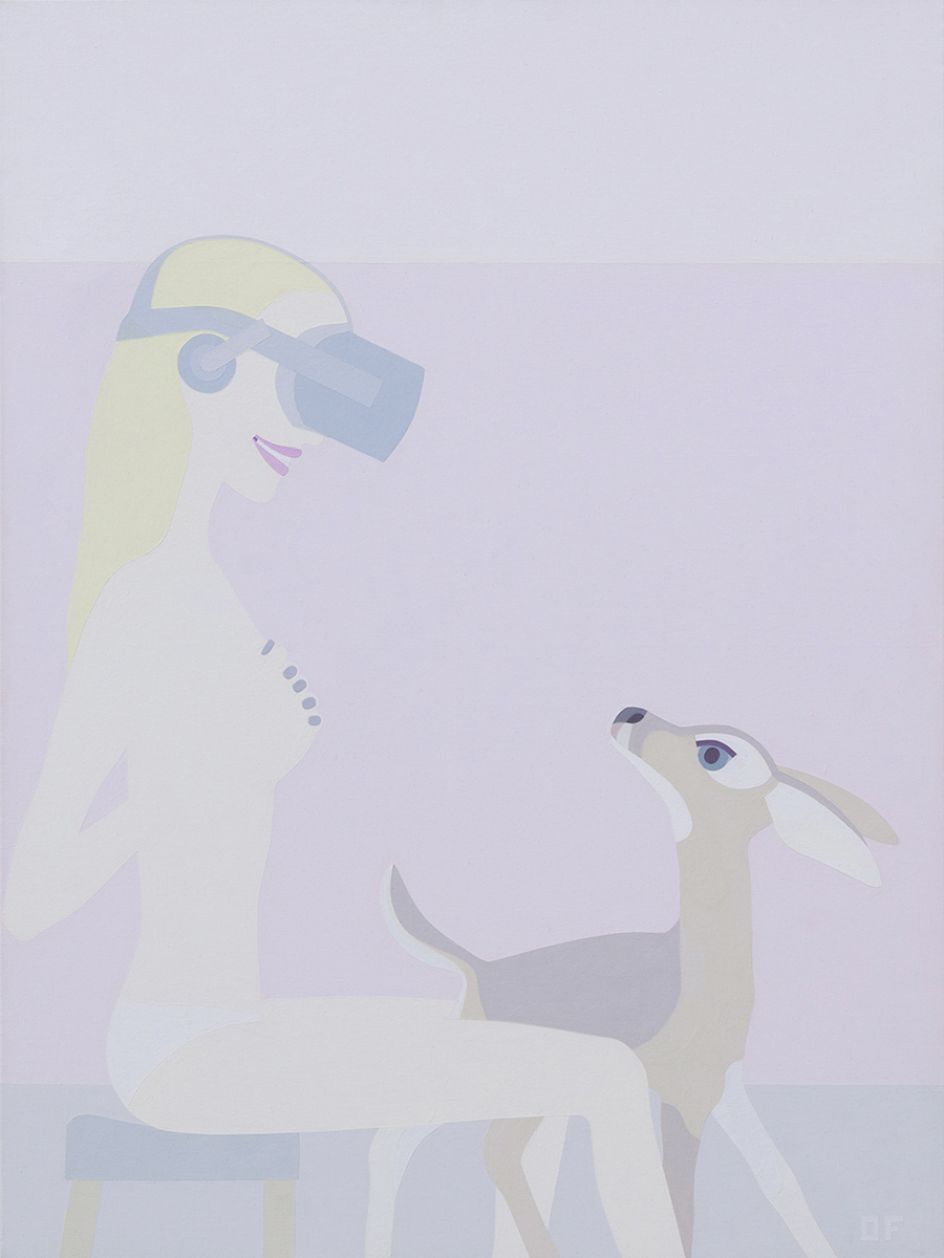
The artist’s approach to drawing the body is highly stylised, honing in on simple representations of facial features—or as she puts it, “ wide frozen smile and eyes.”
And while the pieces examine digital culture, they are created entirely using analogue processes using acrylic on canvases that are almost the exact size of the viewer.
The aim of the pieces, according to the artists, is to make us think more (or indeed at all) about how the female body, often just through disembodied, distally-framed parts, become part of a wider consciousness. What does this mean for what we think of as “women”, as “feminine”?
Her use of deer within her images (sometimes these sport VR headsets) hints at the idea of the corruption of nature, perhaps, and evokes ideas of fairytales, too. For the artist, though, the baby deer also represents the “inner child”—one “ mesmerised with the perfection of the tech, digital and virtual world.”
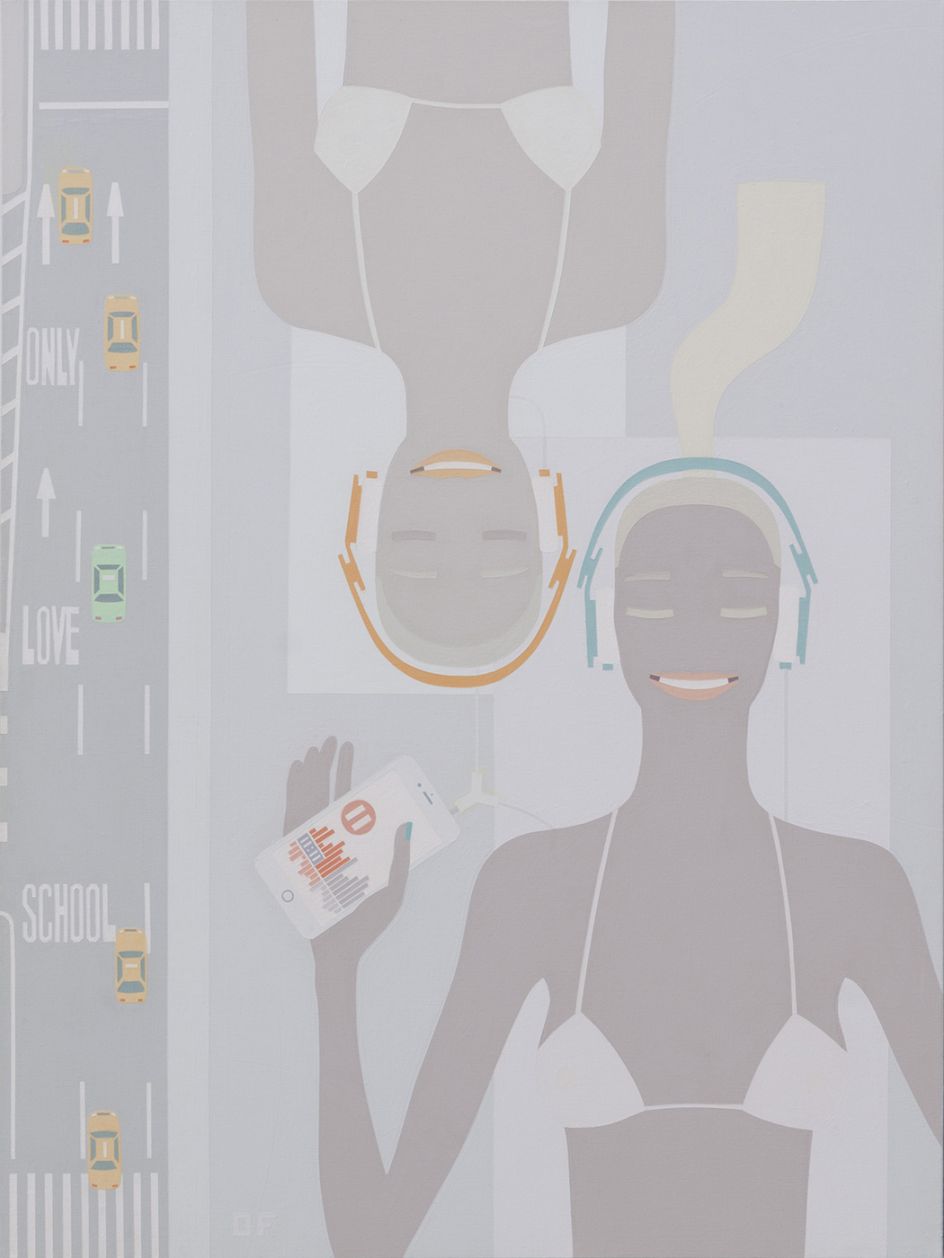
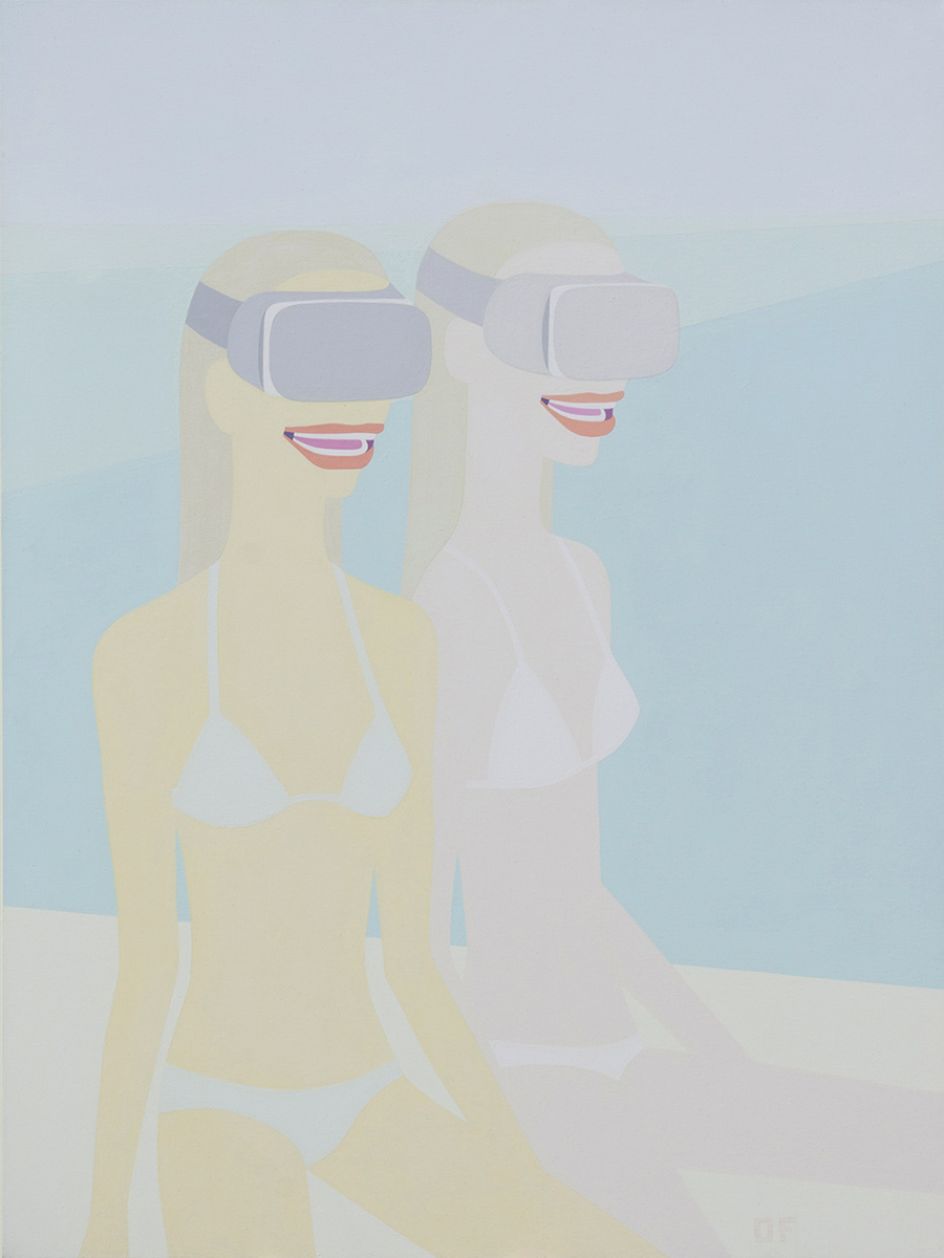
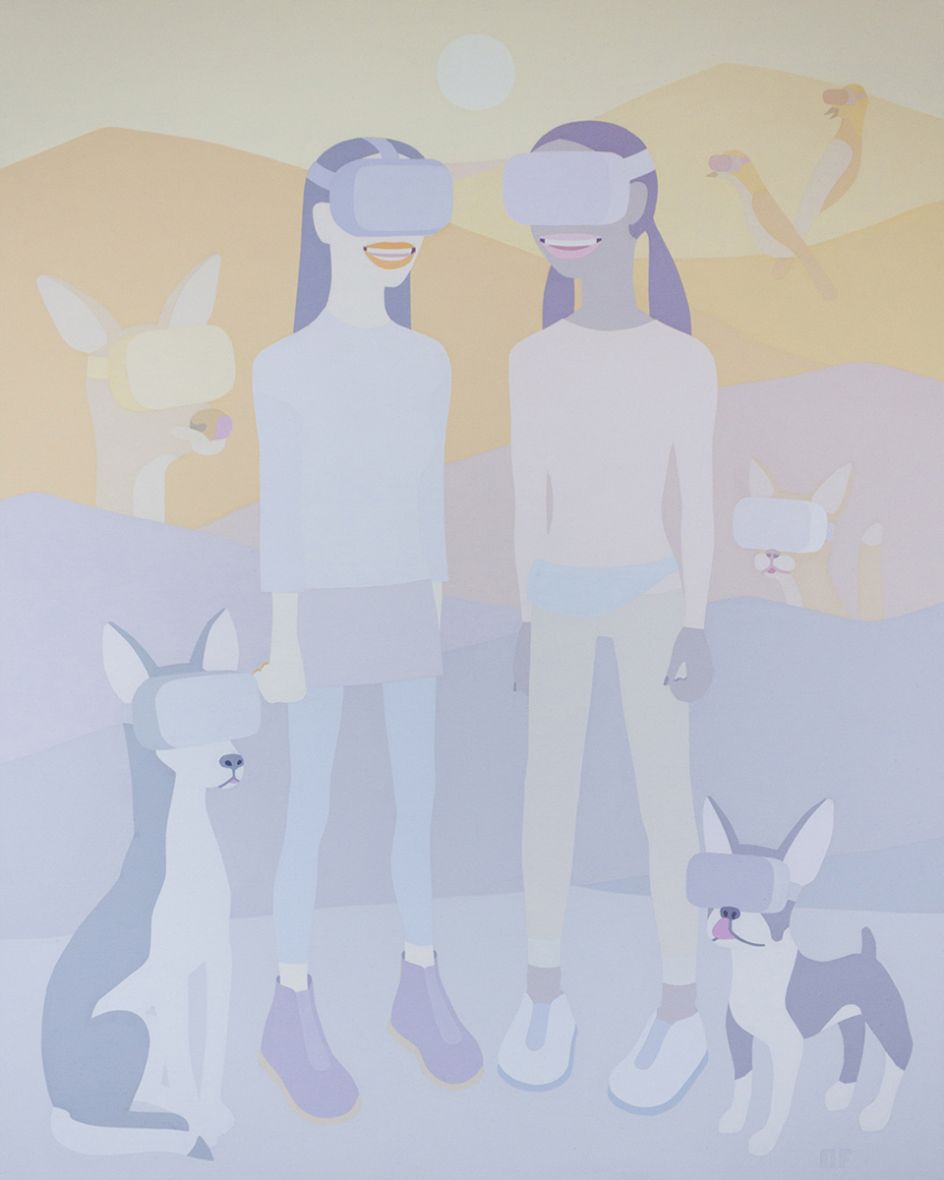
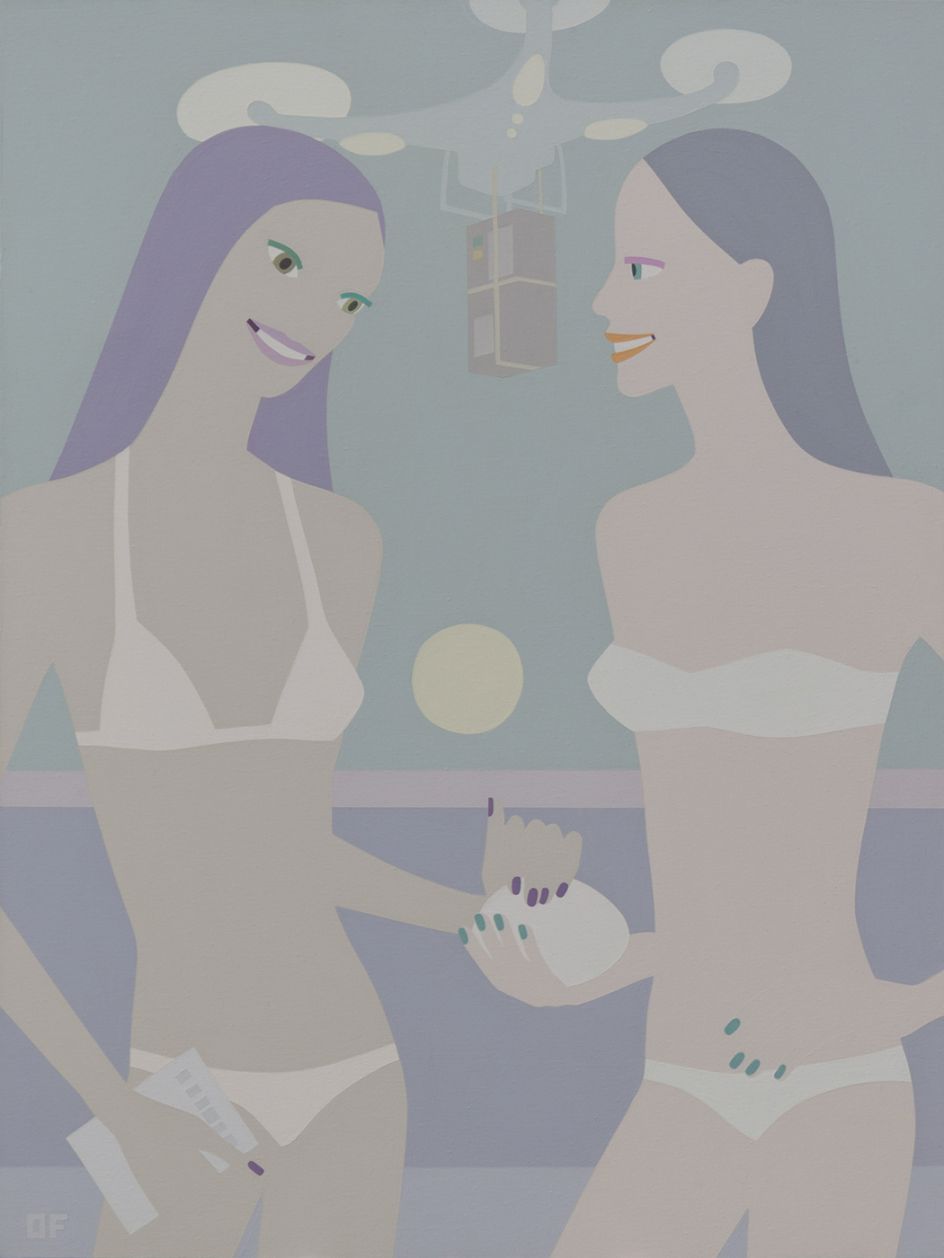
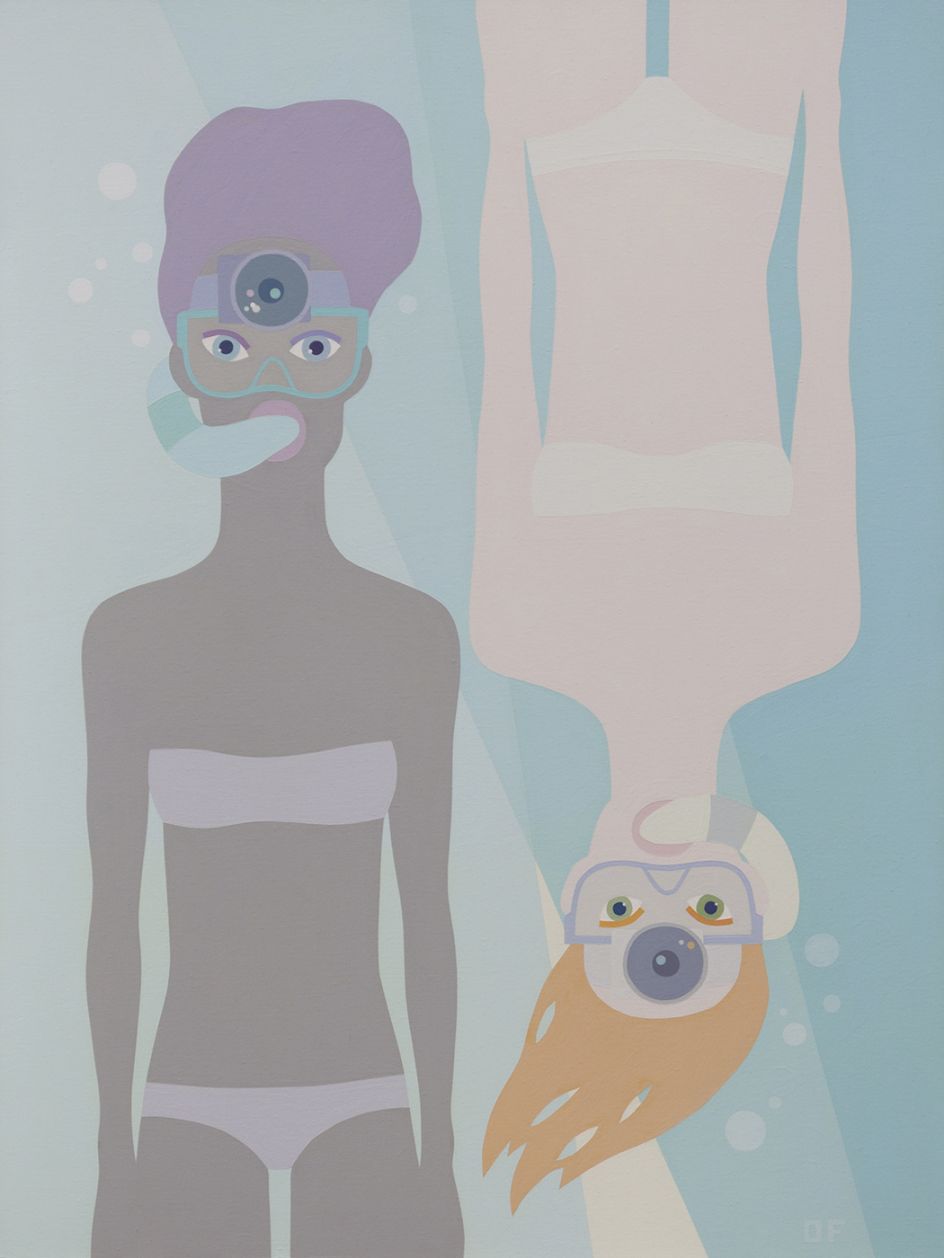
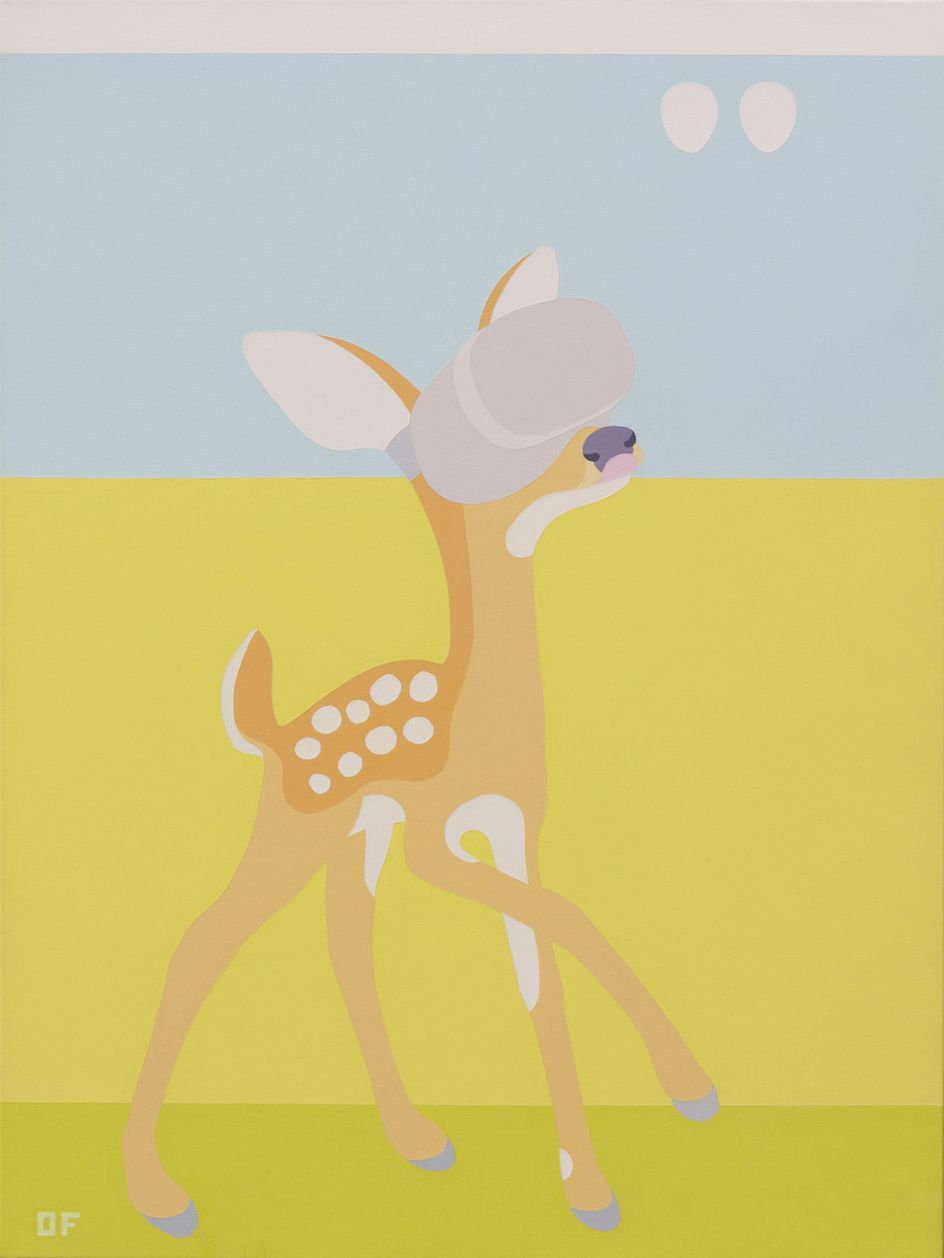
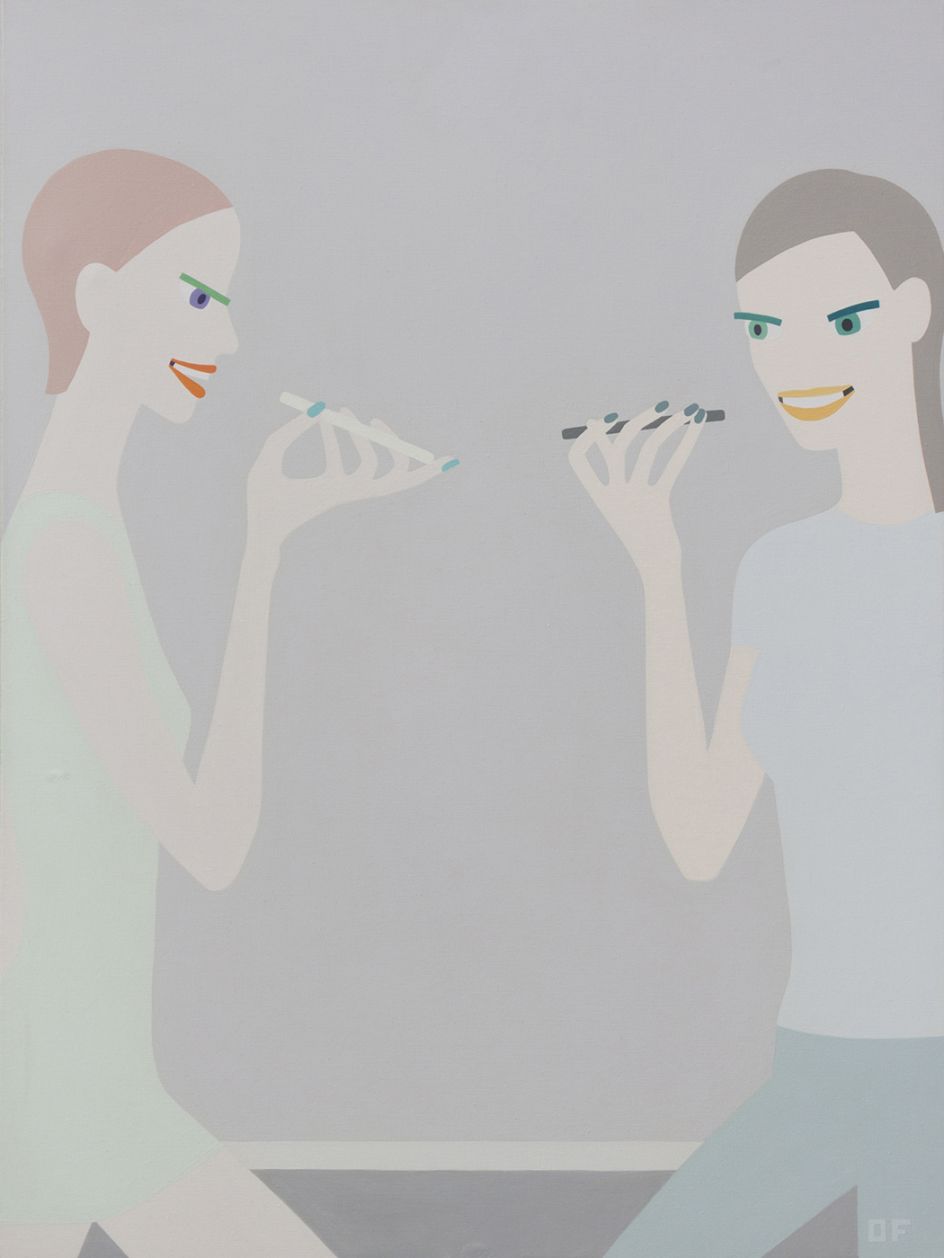
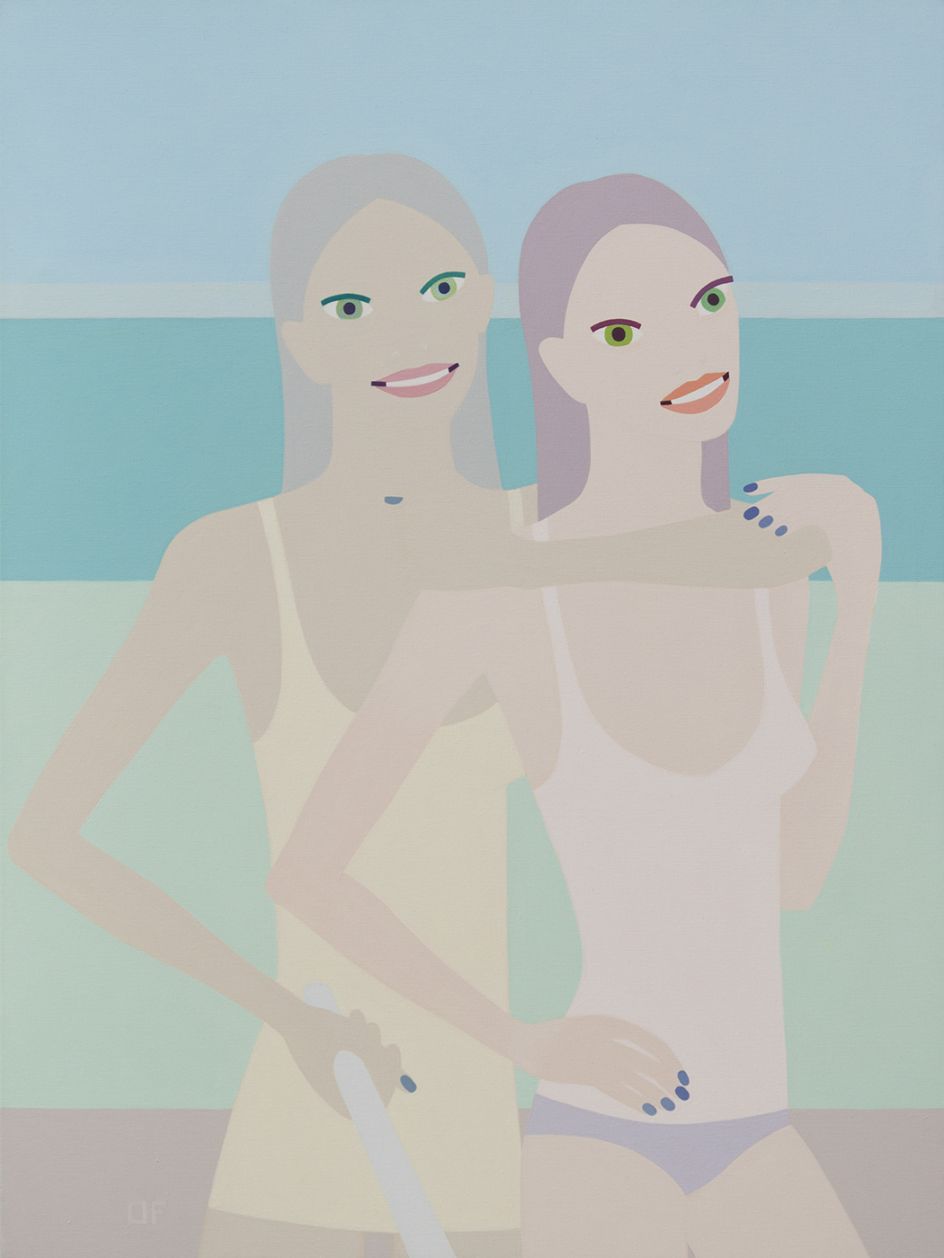
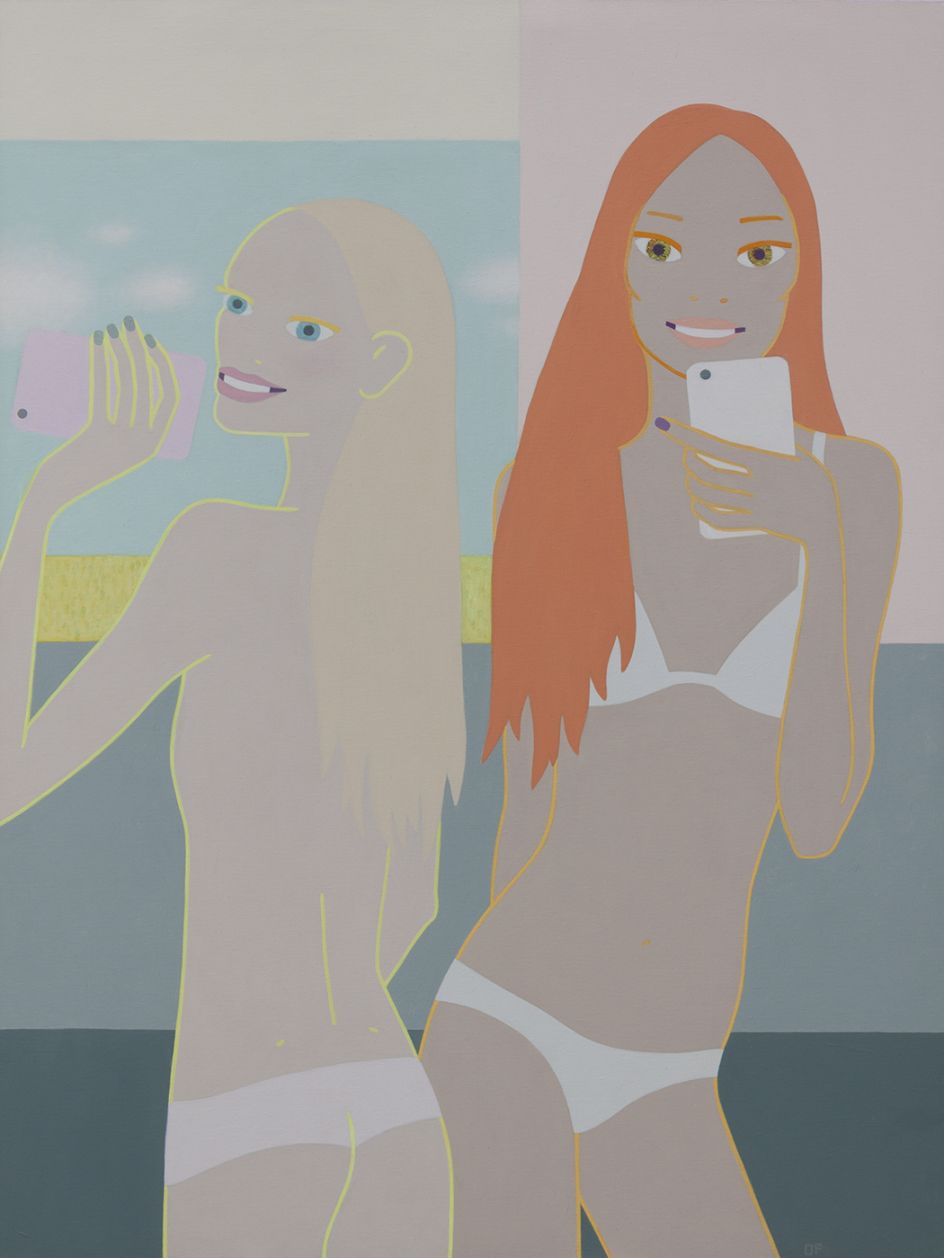






 using <a href="https://www.ohnotype.co/fonts/obviously" target="_blank">Obviously</a> by Oh No Type Co., Art Director, Brand & Creative—Spotify](https://www.creativeboom.com/upload/articles/6e/6ed31eddc26fa563f213fc76d6993dab9231ffe4_732.jpg)
 by Tüpokompanii](https://www.creativeboom.com/upload/articles/58/58684538770fb5b428dc1882f7a732f153500153_732.jpg)







